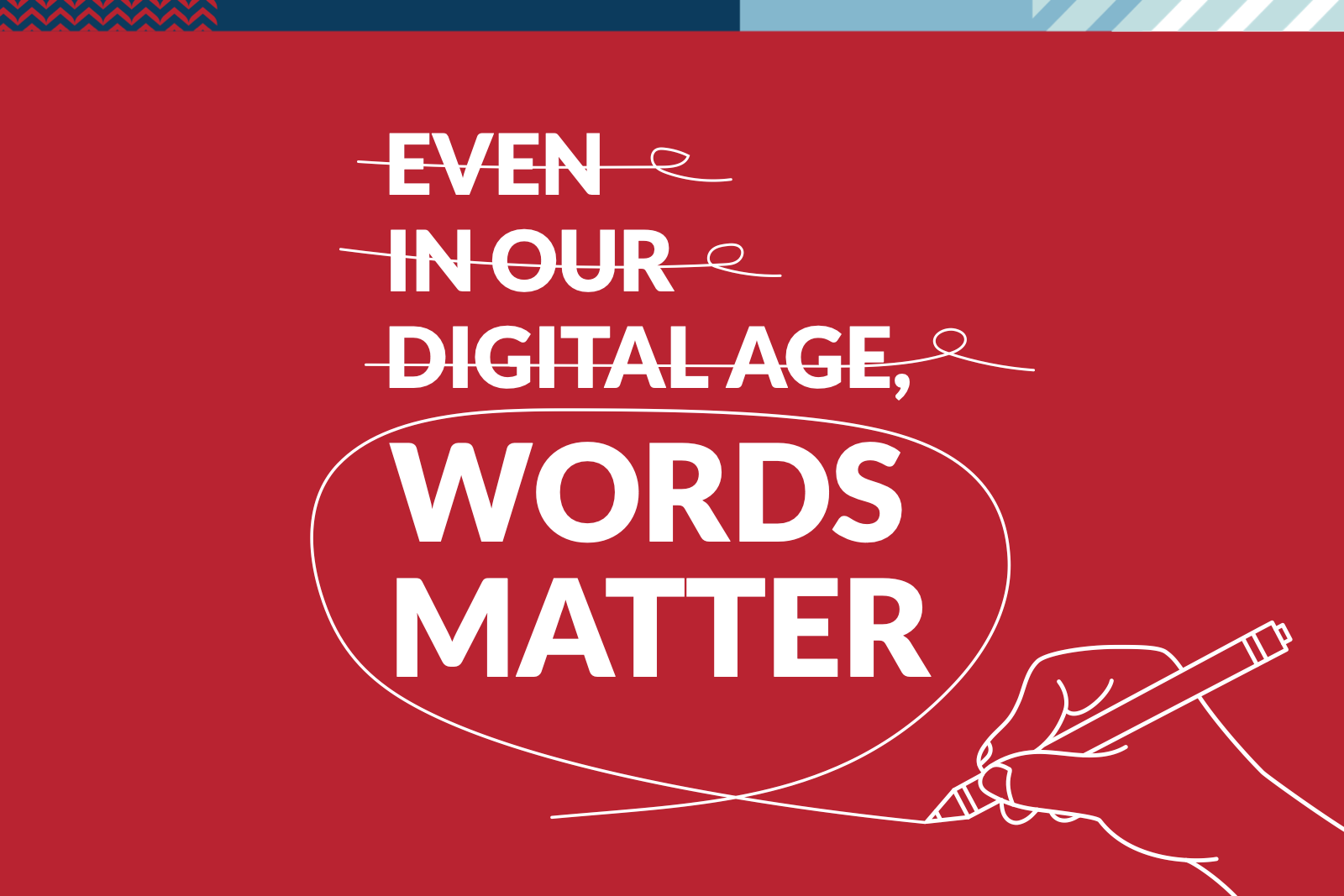But Really, Words Matter

Editors regularly encounter a common misunderstanding about their work—that grammar rules are fixed, without the need for interpretation. And, sure, subject-verb agreement isn’t really up for debate. But even something as apparently clear-cut as punctuation often requires judgment calls based on context, tone, intended audience, and communication type. Editors must not only assess the mechanics of grammar and punctuation but also think about voice and tone.
As marketing editors, we help align the message to the medium and the voice to the brand. Along the way, we encounter common style missteps. They’re not precisely errors, but they don’t land a client’s message ideally. That’s a problem when we’re oversaturated with texts, emails, and ads all vying for our attention.
Taking care not just to eliminate typos but to really give copy a final polish is crucial. After all, you don’t want your brand’s copy to create obstacles—grammatical, thematic, or just plain off-putting—that your audience must overcome before grasping your intended message.
So what should you look for? Here are some of the gray areas we find especially troubling, frequent, or cringeworthy.
Embrace current usage
No matter what you learned in grade school, in most instances you don’t need a comma before too—or two spaces between sentences. These examples reflect how punctuation and style evolve over time. Today, both have an old-fashioned ring that most brands wish to avoid.
👎 Let’s talk about spaces. And commas, too.
👍 Let’s talk about spaces. And commas too.
Sound like a human
Tone requires an artful balance. Copy should sound conversational but not adopt the messiness that can characterize actual speech. One simple start is embracing contractions. And don’t be afraid to use plain language. Industry-specific jargon, buzzwords, and legalese may be frequently used around your office, but they create barriers for most readers. Also don’t try to impress with three syllables where one will do, and embrace natural-sounding phrases rather than overwrought, flowery descriptions.
👎 You are likely to be entreated to move the goalposts by architecting an actionable solution utilizing a synergistic lexicon.
👍 But you’ll probably accomplish more with simple, straightforward language.
Kill passive constructions
Active voice is more direct and engaging. We’re talking verbs here. For example: The marketer identified the brand’s key audience. Not: The brand’s key audience was identified by the marketer. Additionally, passive constructions can create a sense of distrust—they offer ambiguity and create a sense of distance. Unless you want to skirt responsibility—then passive voice works great. Otherwise, avoid.
👎 There are many ways for sentences to be passive.
👍 Active sentences provide more clarity—and even more momentum.
Be concise
Eliminate filler and hedging words, such as in order to, the fact that, kind of, just, and very. They weigh down language, slowing readers and distracting them from your core point. Use original copy, not clichéd constructions (e.g., think outside the box), which often stand in for complex ideas. And don’t overexplain, which too often encourages readers to look away—and never look back. In short, finding and eliminating fillers, clichés, and excessive elaboration can energize your messaging.
Don’t drown out your brand voice with cutesy copy
Stay away from niche slang and over-the-top wordplay unless they fit the brand voice and will resonate with your intended audience. Figures of speech and idioms can convey personality and contribute to engaging copy—but consider language accessibility, particularly when targeting a global audience or creating work that will be translated.
Plus, while you want to sound contemporary, be wary of short-lived linguistic fads and overused phrases. Remember, for example, on fleek. It had a moment but now feels as dated as groovy or gag me with a spoon. Or take the current favorite now more than ever, which lands as hyperbole. That is, is it true that in all of human history, something is happening now that exceeds all past events? (While we’re at it, please also consider avoiding this trendy idiom: level up.)
You’d be hard-pressed to find people who care more about language and usage than editors. We stand ready to nerd out anytime. Want to chat about distinctions between hyphens, en dashes, and em dashes? Fantastic. Interested in when less should be fewer? Thrilled. Seeking clarity on title case? Look no further.
But please believe us when we say most editors aren’t party poopers advocating for bland, mechanical writing. On the contrary, they’re advocates for active, efficient, approachable language—a critical ingredient for clever, brand-appropriate creative.
So make sure your process includes not just a review for factual accuracy plus correct grammar and spelling, but also a more panoramic language assessment. Does the message align with your brand’s voice? Do the syntax and word choice reflect everyday language? Is your copy concise without being terse? And, most important, does the copy follow a writer’s golden rule—in other words, would you actually read it?
Karen Butak and Wendy Weckwerth are part of the editing team at The Lacek Group. For more than 30 years, The Lacek Group has been perfecting the art and algorithms of brand devotion. We help world-class brands identify their highest-potential customers, engage them across channels throughout their lifecycles, personalize each relationship for optimal long-term results, and measure the true effectiveness of those efforts. The Lacek Group is an Ogilvy One company.

